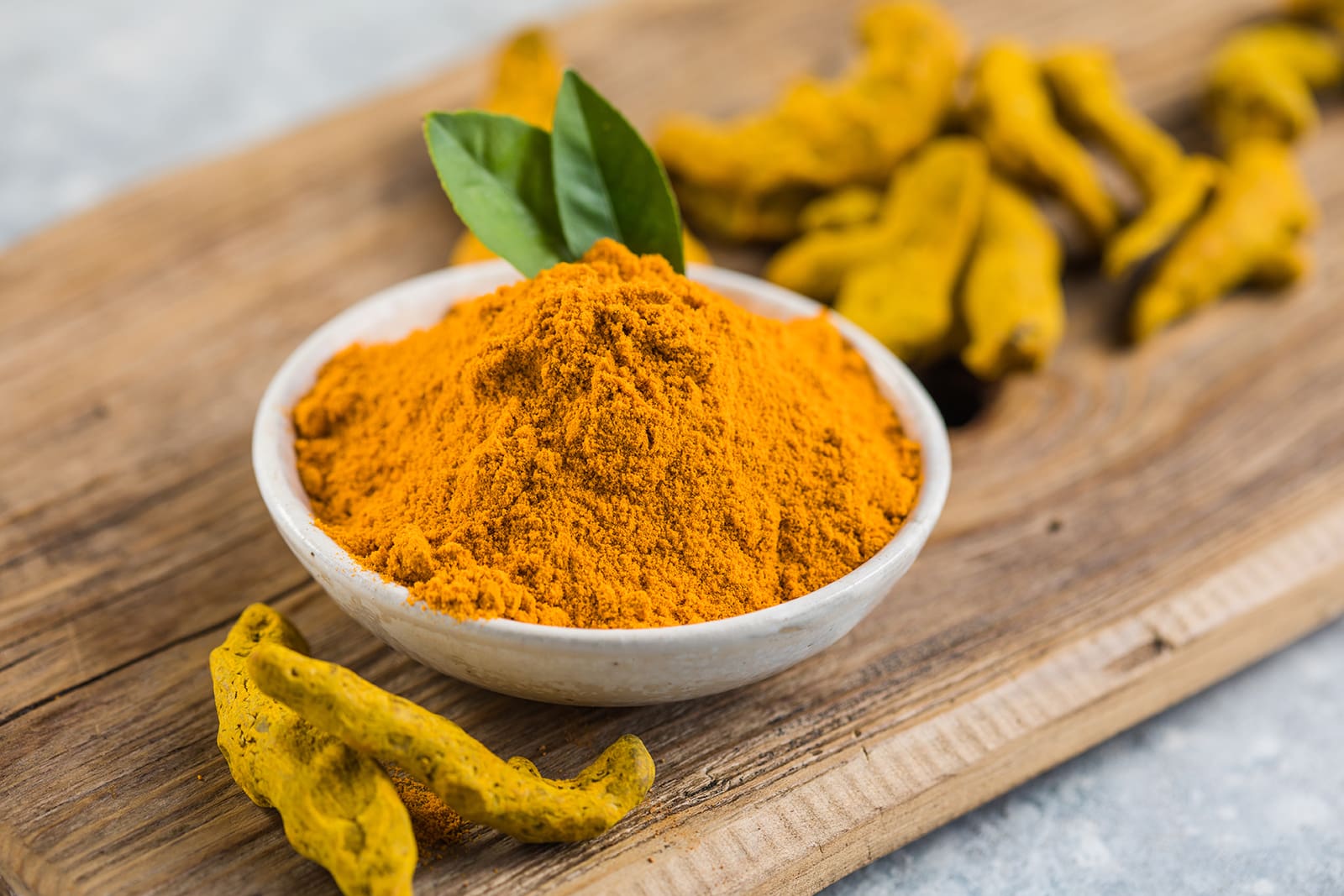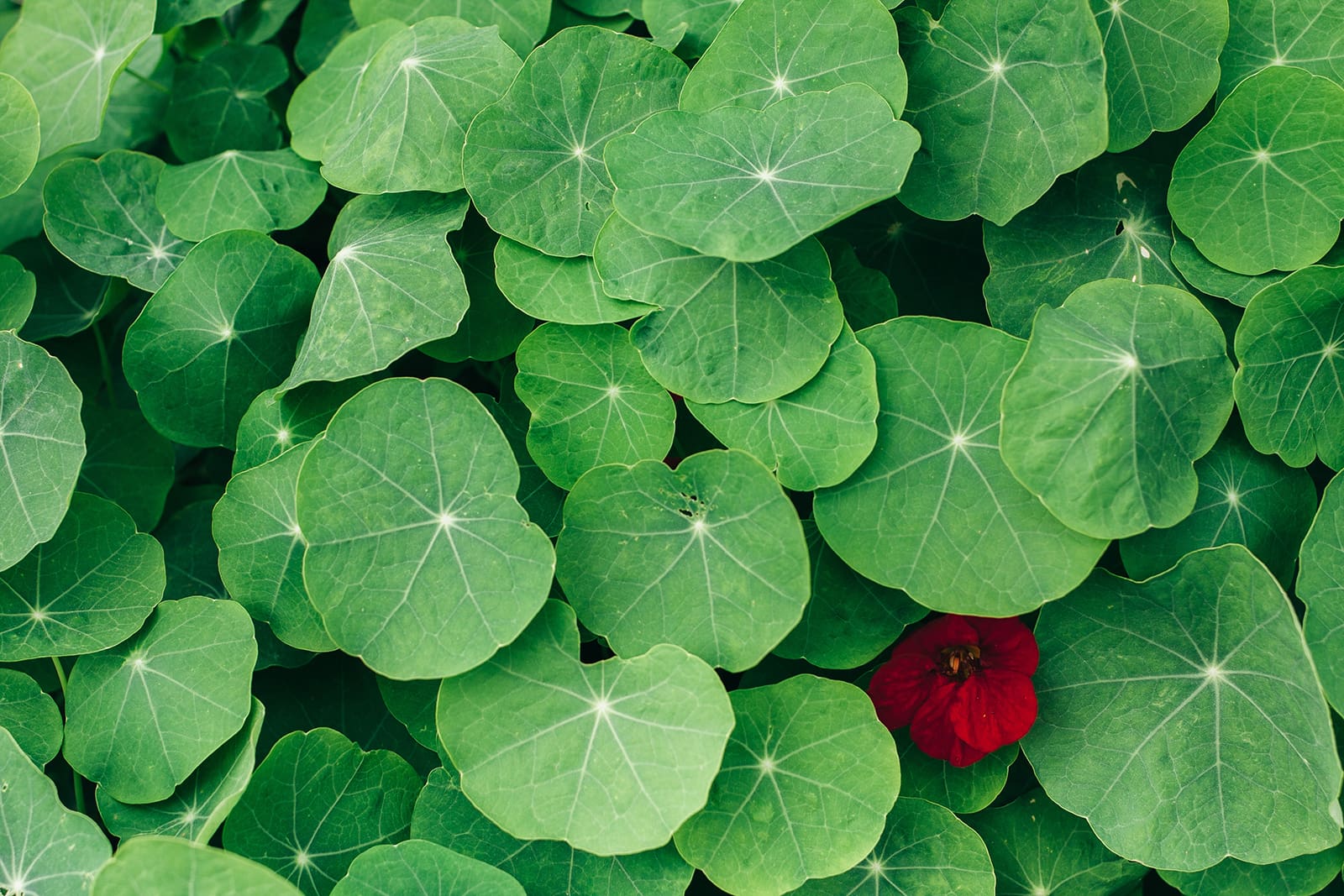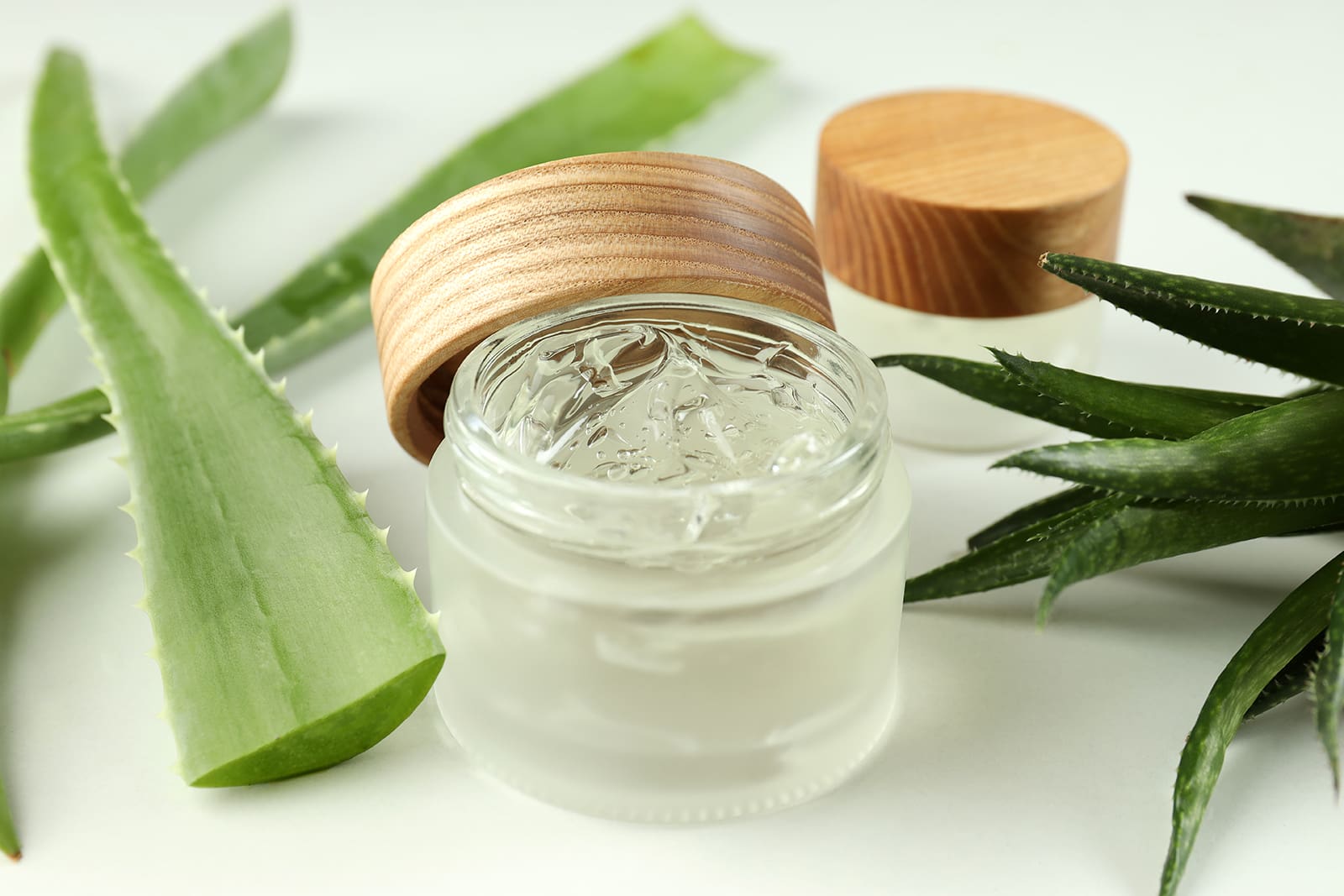Photographed by Jacob Maentz
These Ayurvedic ingredients can serve as your ticket to better skin, hair and health—whether you mix them in a smoothie or use them in a mask. We asked an expert on how you can use them in your favorite DIY beauty recipes
Everything in the beauty world is coming back full circle, so it makes complete sense that the at-home remedies that were tried and tested centuries before have now made their way back into the spotlight. What’s old is new again—and your grandmother’s favorite fail-safe ingredients, like turmeric and aloe vera, have become trendy must-haves you can’t overlook anymore. Vasudha Rai, wellness expert and author of the book Glow: Recipes And Rituals For Beauty, Inside And Out shares her favorite kitchen ingredients that can benefit your hair and skin when applied topically, and act as medicinal superfoods when ingested.
Turmeric

There’s a reason this yellow spice is indiscriminately added to most Indian recipes, and also slathered on brides before their wedding day. It is a powerful anti-inflammatory, antioxidant ingredient that, due to its active ingredient curcumin, has a prominent effect on inflammatory diseases like heart disease and cancer. It stimulates bile flow from the gall bladder to the digestive tract too, which can improve gut health considerably. When applied on the skin, turmeric is able to brighten an uneven skin tone, speed up healing of wounds, cuts or scars, and can even quell free radicals that cause premature aging.
Eat it: Adding it to lattes is a popular way to ingest it, but turmeric is fat-soluble, so eating it with a healthy fat (like with coconut oil) can help absorption. “Add it to a bone broth or curry, and pair it with black pepper for the best result,” says Rai.
Apply it: Use the spice as a quick fix remedy for a bad wound or cut on the skin (like if you nicked your skin while shaving or picked a pimple). Turmeric helps wounds heal faster, as curcumin can decrease oxidation and lower the stress response. Some studies have even shown that it can decrease UV damage due to its antioxidant properties, which is why it feels cool and calming on a sunburn or a heat rash.
Gotu kola

Gotu kola (or Centella Asiatica) is usually the first line of defense for skin that is prone to redness or irritation. When eaten or taken as a supplement, it can improve memory and cognition, and even protect the brain from strokes. Studies have shown that consuming the herb can promote relaxation and reduce anxiety and stress, as it is able to increase the secretion of feel-good neurotransmitters like serotonin and dopamine, while also reducing cortisol levels.
Eat it: Gotu kola is usually available as a dried or fresh leaf (or a tincture), so you can steep it in hot water and drink it as a tea. “I like to just extract fresh juice from the leaves and drink it on an empty stomach in the morning,” says Rai.
Apply it: It is most often found in skincare products meant for wound healing, and applying a pinch of the juice from the leaves to inflamed skin can help too. If scars and dull skin are your main issues, gotu kola can fight off free radicals while boosting the formation of collagen and skin tissue, thus maintaining skin’s elasticity. “It is very potent on the skin, so use very little at a time,” warns Rai.
Aloe vera

Due to its anti-inflammatory, antibacterial, astringent and antiseptic properties, aloe vera is a very effective ingredient for skincare and haircare, especially during the summers. Upon consumption, aloe vera can reduce inflammation levels (which protects you against chronic diseases), and cool the digestive system after a spicy or heartburn inducing meal. Aloe vera is also alkaline, and can balance and hydrate the body, improving liver function in the process.
Eat it: Aloe vera has a smooth jelly-like substance that lends itself well to smoothies or juices. “You could cut the pieces up and spice it with chili powder for a quick snack,” confirms Rai. Eat it as right before your meals, or as the first food you eat early in the morning.
Apply it: “For all the other ingredients, I’d exercise caution and use just a pinch. But with aloe vera, nothing is too much. You can slather it on an irritated face, after you’ve gotten waxing done or have had a bad reaction to a skincare product,” says Rai of her favorite cure-all ingredient. Aloe vera also works as a great ingredient for frizzy hair, moisturizing dry pieces and balancing the scalp in the process.
Honey

Pure, raw honey is the cornerstone of most Ayurvedic recipes. When eaten, honey can provide instant relief to a scratchy throat, trigger the release of melatonin and boost immunity. Essentially, it can induce better rest while also helping to rebuild cell tissue, since the antioxidant properties of polyphenols reduce the risk of tissue damage. As a humectant, honey is also able to pull water to a dehydrated face, while fighting acne-causing bacteria too.
Eat it: “I like to add raw honey to CBD oil. The two superfoods are very beneficial to soothe and relax the body from the inside out,” says Rai. You can also use it as a carrier for any herbs (like turmeric or gotu kola), as it is warming and can absorb better into the body. It’s also a cooking staple—use it as a sweetener in bakes, cereals or with fruits.
Apply it: It is a main ingredient in countless face masks and hair masks, but Rai likes to use it as a cleanser in the AM. “Just massage it into the face in the morning. It leaves the skin so soft and supple, hydrated but still completely cleansed,” she suggests.
This article was originally published on Vogue India.
